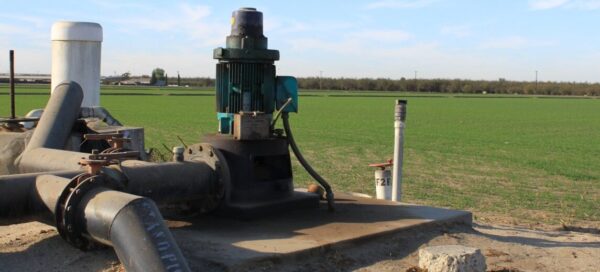
SGMA in the News
Proposed north Butte County water district stirring controversy
“A proposal for a new Butte County water district is wending its way through the approval process, and not everyone is happy about that. The Tuscan Water District would cover most of the northwestern county, excluding Chico. The area is dependent on well water. Under a recently approved state law, the amount of groundwater currently being pumped in the area will have to be reduced. Each well owner is currently on their own. No entity speaks for them as a group. Proponents say the Tuscan Water District would be that advocate for the whole area. However a handful of farming families own the majority of the land in the district, and opponents think they could stack the district’s board of directors to the detriment of the others. … ” Read more from the Chico Enterprise-Record here: Proposed north Butte County water district stirring controversy
Butte Water Commission backs water district proposal
“A proposed water district in northwestern Butte County Wednesday won a split-vote endorsement from the Butte County Water Commission, after a lengthy public hearing. The commission voted 6-3 to recommend the Board of Supervisors support formation of the Tuscan Water District. Even though the vote was just advisory, there were two hours of public comment. When the supervisors take up the matter Sept. 14, their action will also just be advisory, as the Local Agency Formation Commission is the entity that will determine whether the district is formed. … ” Read more from the Oroville Mercury Register here: Butte Water Commission backs water district proposal
Cosumnes subbasin draft Groundwater Sustainability Plan available for public review
“A 20-year plan that will govern how people in south Sacramento County and parts of Amador County use groundwater and pay to sustain its availability has been released for public review and comment. Comments are due October 20, 2021.The plan includes broad-based fees on wells and water usage, with the largest portion of the funds generated earmarked for projects that are designed to increase the availability of groundwater in the future. The draft Cosumnes Subbasin Groundwater Sustainability Plan (GSP) is a state-mandated plan for achieving sustainable management of groundwater use in the southeastern portion of Sacramento County and parts of Amador County. … ” Read more from the Amador Ledger-Dispatch here: Cosumnes subbasin draft Groundwater Sustainability Plan available for public review
Cooperation, not opposition, is key to solving California’s groundwater management
Merced County supervisor Daron McDaniel and Calavaras County supervisor Jack Garamendi write, “Once again, we find ourselves in a drought and running out of water. For the second time in the past decade, we are enduring another frustrating and uncertain period, asking how we will sustain the citizens of California as well as the agriculture that feeds the world. Drought is not new to California and we have engineered one of the most comprehensive and complex systems on the planet to water our crops and people. What has changed is that the investments our grandparents made that allowed our state to bloom are now deteriorating, our water storage is inadequate, and we are woefully behind in managing the vast, but declining aquifer that runs throughout our state. … ” Read more from the Merced Sun-Star here: Cooperation, not opposition, is key to solving California’s groundwater management
Madera County residents and farmers face groundwater challenge of a lifetime
“Madera County is running out of time as groundwater levels plummet to new depths. Wells are going dry everywhere. Drillers have months-long waitlists. Residents are scrambling for water tanks. And farmers will soon face a reckoning after agriculture’s footprint, particularly nut trees, has more than doubled in the past 50 years — far outpacing irrigation supplies. There’s growing consensus among farmers, county officials and residents that Madera’s groundwater problem will be solved mainly by cutting water demand, not by waiting for more dams to be built or even recharging excess water into the aquifer. … ” Read more from the Fresno Bee here: Madera County residents and farmers face groundwater challenge of a lifetime
Madera commentary: Is anyone listening?
Tom Willey with T&D Willey Farms writes, “One courageous voice in our community has been sounding the alarm that our precious aquifer, lifeblood of our economy, households, and public facilities, is in imminent collapse. For the better part of this year, Matt Angell, managing partner of Madera Pumps Inc., has been reeling his video camera down failing wells across the county, stunned by the unprecedented conditions he is witnessing. Plunging water levels, well casings crushed and split like beer cans, and good wells reduced to a trickle of their recent selves, have Matt sounding the cry that our community must respond in equal measure to the challenge before us. We are not. Is anyone listening? … ” Continue reading at the Madera Tribune here: Madera commentary: Is anyone listening?
Some Monterey County growers are risking a fragile resource to survive the drought.
 “In the midst of a widespread drought, Lakes San Antonio and Nacimiento, critically important reservoirs for Monterey County, are at their lowest capacity levels since 2017. When the lakes get low, the ability to get enough water to some agricultural growers gets complicated. Add politics and Covid to the mix and you get the scramble underway between the region’s sewage agency, the city of Salinas and the Monterey County Water Resources Agency to deliver water to thousands of acres of crops and protect a fragile underground water supply. … ” Read more from the Monterey County Weekly here: Some Monterey County growers are risking a fragile resource to survive the drought.
“In the midst of a widespread drought, Lakes San Antonio and Nacimiento, critically important reservoirs for Monterey County, are at their lowest capacity levels since 2017. When the lakes get low, the ability to get enough water to some agricultural growers gets complicated. Add politics and Covid to the mix and you get the scramble underway between the region’s sewage agency, the city of Salinas and the Monterey County Water Resources Agency to deliver water to thousands of acres of crops and protect a fragile underground water supply. … ” Read more from the Monterey County Weekly here: Some Monterey County growers are risking a fragile resource to survive the drought.
Edna Valley farmers, residents, and water companies collaborate on plan to stabilize groundwater basin
“Water wells in the Edna Valley used to be shallow: “You could put a well to 30 or 40 feet. Well that’s just kind of unrealistic [now],” Edna Valley Growers Mutual Company President Bob Schiebelhut said. Some of those shallow wells didn’t make it through the last drought, drying up and forcing landowners to drill a little deeper. Now in a new drought, Edna Valley farmers and residents are once again praying for rain, Schiebelhut said. But they’re also moving forward with SLO County and the city of SLO on a plan to make their groundwater more drought resilient. The 30-day comment period on a draft of that plan—which covers approximately 20 square miles from the city of San Luis Obispo and Cal Poly to Lopez Reservoir just before Orcutt Road meets Lopez Drive—ends on Sept. 19. … ” Read more from New Times SLO here: Edna Valley farmers, residents, and water companies collaborate on plan to stabilize groundwater basin
SLO County develops tools to sell, transfer, and exchange state water
“Fifth District SLO County Supervisor Debbie Arnold’s concerns about groundwater banking persist as the county takes steps to enable more flexibility for its unused State Water Project water. “I’ve been pretty clear all along, I don’t want to ever see our basins here in the county be used for groundwater banks at all, especially with state water,” Arnold said during the Aug. 24 Board of Supervisors meeting. “If we have excess state water, I think we start to concentrate—where we build the infrastructure to put it in above ground storage like Lopez [Lake], so that people in our county can use it. … But not groundwater banking.” … ” Read more from New Times SLO here: SLO County develops tools to sell, transfer, and exchange state water
Cuyama Valley groundwater basin joins growing list of post-SGMA comprehensive groundwater adjudications
“Facing depleting groundwater supplies, a group of landowners in the Cuyama Valley Groundwater Basin, which overlies parts of Ventura, Kern, San Luis Obispo, and Santa Barbara Counties, filed a complaint for a comprehensive adjudication of all the groundwater rights in the basin. In the wake of California’s Sustainable Groundwater Act (“SGMA”), which requires regulation of groundwater for long-term sustainability, and as drought affects water supplies throughout California, a growing number of adjudications are being filed under the Comprehensive Groundwater Adjudication Statute, California Code of Civil Procedure sections 830 et seq. This is the fifth such adjudication filed since 2015, when the California Legislature revised the process for comprehensive groundwater adjudications. These adjudications resolve all water rights in a given groundwater basin. … ” Read more from O’Melveny here: Cuyama Valley groundwater basin joins growing list of post-SGMA comprehensive groundwater adjudications
Groundwater storage increases for local Chino Basin rights holders
“A San Bernardino County Superior Court judge today ruled that local agencies that pump water from the Chino Basin can store and access an additional six-month supply of groundwater, providing significant benefit for 1.5 million people across Inland Southern California. The ruling by Judge Stanford Reichert on this single element of the Chino Basin Optimum Basin Management Program (OBMP) means water providers in the region can retain use of the stockpiled groundwater, worth about $50 million, and have room for more. The Chino Basin Watermaster Board of Directors and staff and the cooperating agencies worked together to craft this solution over the course of several years. … ” Read more from ACWA Water News here: Groundwater storage increases for local Chino Basin rights holders
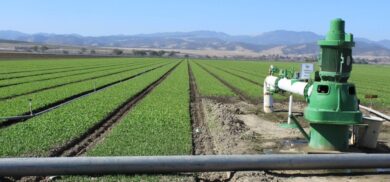
A Test for California’s Groundwater Regulations in the Megadrought
California’s megadrought has brought forth competition for scarce water supplies. Brownstein Hyatt shareholder Stephanie Osler Hastings examines implementation of the California Legislature’s first comprehensive groundwater regulation to deal with the issue, enacted in 2014, in this context. She also looks at recent challenges to these rules.
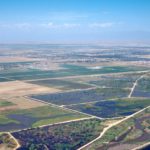
Sustainable Conservation Releases Key Water Quality Guidance for On-Farm Recharge
 From Sustainable Conservation:
From Sustainable Conservation:
Sustainable Conservation, a San Francisco- and Modesto-based non-profit, has developed two key resources to inform on-farm recharge practices that are protective of water quality.
Protecting Water Quality
Over 600,000 Californians rely on nitrate-contaminated public supply wells for their household water needs. Many others struggle with contaminated groundwater from private, domestic wells – so the numbers are even greater. Recharging groundwater with water quality as a top priority will help the San Joaquin Valley – our nation’s premier farming region – manage through California’s inevitable droughts, ensure safe drinking water for farm-adjacent communities, and support a thriving agricultural economy as the region complies with the Sustainable Groundwater Management Act.
Achieving Groundwater Sustainability
Conceived in coordination with a diverse group of stakeholders and supported by a committee of San Joaquin Valley leaders, our nitrate management brief and water quality research paper compile the best available science with Sustainable Conservation’s decade-plus of on-the-ground experience with groundwater recharge. Replenishing aquifers by allowing surface water to seep into the ground has great potential to help water managers and agricultural communities achieve groundwater sustainability. However, when recharging on farm fields – a practice known in water management circles as Agricultural Managed Aquifer Recharge (AgMAR) – the potential mobilization of nitrate and salts is a serious concern, and this guidance suite presents field- and regional-scale considerations to protect community water quality.
Sustainable Conservation will share its new guidance widely with growers, water managers, community organizers, and our broader audience of friends and supporters through our various events, webinars, and publications. For all media inquiries, please contact Christa Harader, Sustainable Conservation Digital Content Producer. If you need technical assistance or would like to request a small group presentation for your community or organization, please contact Taylor Broadhead, Sustainable Conservation Water and Dairies Project Manager.

USGS Report: Increased Pumping in California’s Central Valley During Drought Worsens Groundwater Quality
From the USGS:
Intensive pumping of aquifers during drought can speed up deterioration of groundwater quality, according to a new study by the U.S. Geological Survey. The results highlight clean drinking water supply vulnerabilities in California and other western states currently experiencing record drought conditions.
“Water quality problems from legacy groundwater pollution could get worse, faster, when pumping increases during drought,” said Dr. Zeno Levy, a research geologist with the USGS. “This could lead to more public drinking-water wells being shut down if costly treatment or cleaner water sources to mix with are not available.”
Researchers examined 30 years of data from California’s Central Valley to find increasing nitrate concentrations at public drinking-water wells were more prevalent in areas where groundwater levels dropped rapidly during drought. Nitrate is a contaminant from fertilizer typically present at elevated concentrations in shallow groundwater throughout the Central Valley due to decades of agricultural land use. Scientists found that increased pumping from wells during drought can pull shallow, contaminated groundwater down to depths commonly tapped for public drinking-water supply.
Previous groundwater research has focused on the risk of wells being overdrawn and running dry during drought. The new study provides a major advancement to understanding the related consequences to water quality caused by over pumping.
The study is unique in that it looked at regional linkages between groundwater use and quality, rather than local patterns at the scale of individual wells. This research was undertaken as part of a cooperative effort between the USGS and the California State Water Resources Control Board’s Groundwater Ambient Monitoring and Assessment Program.
The study “Critical aquifer overdraft accelerates degradation of groundwater quality in California’s Central Valley during drought” is published in Geophysical Research Letters.
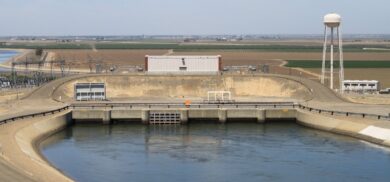
PPIC Fact Sheet: California’s Water Market
From the PPIC:
Water marketing is an important tool for managing scarce supplies.
-
- In California’s water market, buyers and sellers trade water through short- and long-term leases as well as permanent sales of their water rights. Trading enhances flexibility in water management.
- Short-term transfers lessen the economic impact of shortages during droughts by shifting water to activities and places where the lack of water will be more costly. Long-term and permanent transfers accommodate geographic shifts in water demand as the economy changes and the population grows.
- Today, most trading involves surface water. Some groundwater trading occurs within specially managed basins; this is likely to expand as groundwater users in other basins implement the Sustainable Groundwater Management Act (SGMA).
Click here to read/download the full fact sheet. También disponible en español.

PPIC Fact Sheet: Groundwater Recharge
Groundwater recharge is an important water management practice in California.
-
- Recharge occurs when water seeps into the ground to replenish underground aquifers. Although some recharge happens incidentally—water flowing into the ground from rivers, unlined canals, or excess irrigation—intentional recharge can restore groundwater levels and store water for later use.
- In coastal areas, intentional recharge prevents salty ocean water from entering freshwater aquifers. Recharge can also help prevent impacts from groundwater pumping, such as dry wells or sinking lands, while providing wetland habitat for birds, reducing flood risk, and storing water for droughts.
- Active recharge is a longstanding practice in much of urban Southern California and parts of the Bay Area, Central Coast, and Central Valley.
Click here to view/download fact sheet. También disponible en español.

SGMA in the News
A drought-hit US town finds itself sinking into the ground
““You’ve got too many farmers pumping all around,” complained Raul Atilano. This octogenarian resident of Corcoran, the self-proclaimed farming capital of California, was struggling to make sense of the strangest of phenomena: his already suffering town is sinking, ever so gradually, into the ground. A constant stream of trucks carrying tomatoes, alfalfa or cotton outside this town of 20,000 shows just how inextricably Corcoran’s fate is tied to the intensive farming practiced here. To irrigate its vast fields and help feed America, farm operators began in the last century to pump water from underground sources, so much so that the ground has begun to sink — imagine a series of giant straws sucking up groundwater faster than rain can replenish it, as hydrologist Anne Senter explained it to AFP. … ” Read more from NDTV here: A drought-hit US town finds itself sinking into the ground
Tracy: Plan affecting groundwater wells up for review
“The status of the groundwater aquifer around Tracy will be up for review in the coming months, with an online forum next week the public’s chance to talk about how use of that aquifer could affect local groundwater wells in and around Tracy. … The Tracy Subbasin – a 345,000-acre area with the San Joaquin River on the eastern boundary and Old River to the west, extending north to Mandeville Island – includes the City of Tracy, is considered a medium priority “non-critically overdrafted” basin, meaning that the groundwater sustainability plan for the subbasin must be completed by the end of January 2022. … ” Read more from the Tracy Press here: Plan affecting groundwater wells up for review
Flood irrigation: It keeps water flowing to homes in Manteca, Ripon, Lathrop, & elsewhere in water basin
“Head into the countryside outside of Manteca and Ripon and you will come across a sight that you might view as insanity given the severe drought. There are literally hundreds if not thousands of acres of almond orchards and other cropland being flood irrigated. What looks like a waste of water is actually helping keep water flowing to your home to wash clothes, drink, flush toilets, shower or bathe, and wash dishes and such if you live in Manteca, Ripon, Stockton, Lathrop, Escalon and Lodi. … ” Read more from the Manteca Bulletin here: Flood irrigation: It keeps water flowing to homes in Manteca, Ripon, Lathrop, & elsewhere in water basin
Monterey Peninsula well failed, allowing saltier water to mix with drinking water
“Monterey Peninsula water officials are breathing a sigh of relief after a monitoring well in the Seaside Basin picked up increased salt levels, prompting concerns that an underground reservoir of potable water was being infiltrated by seawater. But it turned out the salts were from a failed well casing that allowed saltier shallow water from the Dune Sands to enter into the well and cross-contaminate the deeper body of water called the Paso Robles Aquifer that is tapped for drinking water. That aquifer can be thought of as a layer of water within the Seaside Basin. ... ” Read more from the Monterey Herald here: Monterey Peninsula well failed, allowing saltier water to mix with drinking water
Ridgecrest: Court backs IWVGA in battle over replenishment fees
 “Two motions to block the Indian Wells Valley Groundwater Authority’s groundwater replenishment fee were shot down in court this week. Judge Kirk H. Nakamura of Orange County Superior Court granted motions filed by the Indian Wells Valley Groundwater Authority to dismiss two separate actions filed by Searles Valley Minerals and Mojave Pistachios. The actions were aimed at stopping the collection of the groundwater replenishment fee, which was imposed last January to fund the cost of securing rights to water to bring to the Indian Wells Valley Groundwater Basin. … ” Read more from the Ridgecrest Independent here: Court backs IWVGA in battle over replenishment fees
“Two motions to block the Indian Wells Valley Groundwater Authority’s groundwater replenishment fee were shot down in court this week. Judge Kirk H. Nakamura of Orange County Superior Court granted motions filed by the Indian Wells Valley Groundwater Authority to dismiss two separate actions filed by Searles Valley Minerals and Mojave Pistachios. The actions were aimed at stopping the collection of the groundwater replenishment fee, which was imposed last January to fund the cost of securing rights to water to bring to the Indian Wells Valley Groundwater Basin. … ” Read more from the Ridgecrest Independent here: Court backs IWVGA in battle over replenishment fees

Ancient River Channels Could Speed Groundwater Recharge
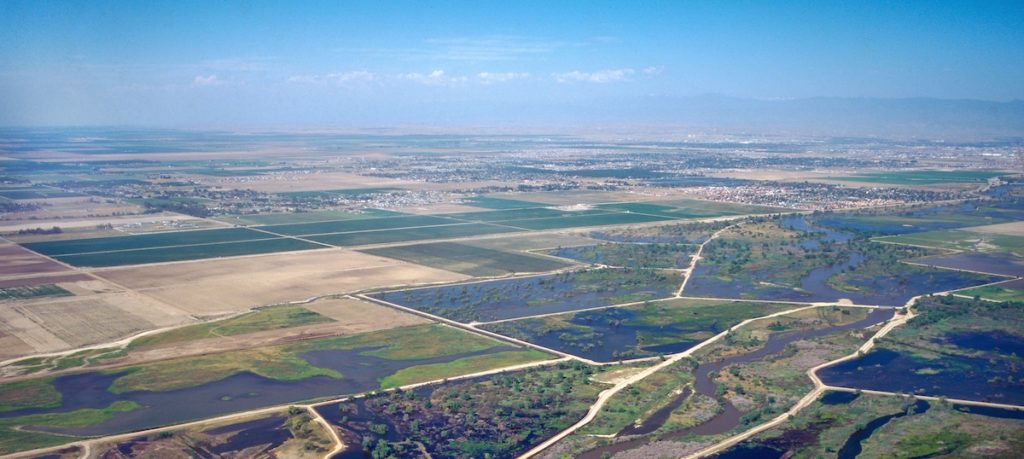 By the time California finally began regulating groundwater use in 2014, most of the San Joaquin Valley was in critical overdraft. The Public Policy Institute of California estimates that groundwater pumping in the region has exceeded replenishment by an average of 1.8 million acre-feet per year over the last few decades. This imbalance was even worse during our last drought, when overuse shot up to 2.4 million acre-feet per year.
By the time California finally began regulating groundwater use in 2014, most of the San Joaquin Valley was in critical overdraft. The Public Policy Institute of California estimates that groundwater pumping in the region has exceeded replenishment by an average of 1.8 million acre-feet per year over the last few decades. This imbalance was even worse during our last drought, when overuse shot up to 2.4 million acre-feet per year.
Overpumping puts groundwater aquifers at risk of compaction, permanently reducing their water storage capacity and making surface lands sink. Now, however, San Joaquin Valley groundwater managers must find and implement a fix. The state’s Sustainable Groundwater Management Act mandates balancing the region’s pumping with replenishment by 2040.
Managed aquifer recharge — diverting excess flood water so it can soak into the ground — is an obvious remedy. But accelerating recharge in the San Joaquin Valley is easier said than done. “Recharge is slow in silt and clay, and these are ubiquitous across the Central Valley,” explains Graham Fogg, an emeritus hydrogeologist at UC Davis.
Fogg and colleagues have found a new way to speed recharge in the Central Valley: ancient river channels where water can shoot underground.
Click here to continue reading this article at Estuary News.
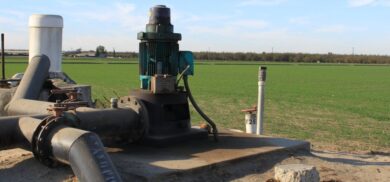
The end of California’s groundwater free-for-all
“The water spigots on California farms will soon be twisted tighter.
As the state faces a growing threat from drought, an increasing number of water agencies are planning to require flow meters on agricultural wells, part of a landmark effort to measure and constrain pumping that used to be free and unlimited. It’s a controversial step aimed at protecting water supplies that could change cultivation practices in the Golden State’s thirsty fields.
“It’s hard to be as efficient as possible if you don’t know how much water you’re using,” said Sierra Ryan, interim water resources manager for Santa Cruz County.
Under the state’s tough new groundwater protection law, “we now have a legal obligation to manage our groundwater sustainably,” she said. “And we cannot manage the basin with such large uncertainties in our water use.” ... ”
Click here to continue reading this article at the San Jose Mercury News.
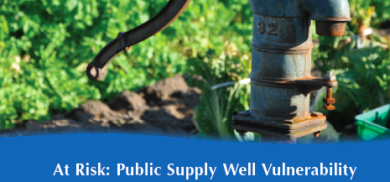
REPORT: At Risk: Public Supply Well Vulnerability Under California’s Sustainable Groundwater Management Act
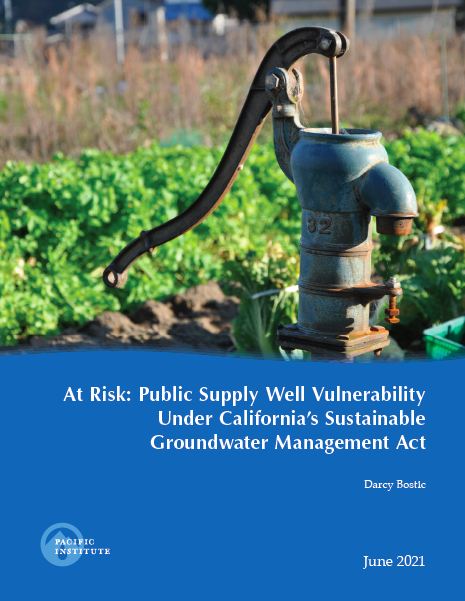 “California’s Sustainable Groundwater Management Act was designed to prevent significant and unreasonable chronic lowering of groundwater levels across the state, among other undesirable effects. Yet implementation often does not protect shallow wells. This report examines public drinking water supply well vulnerability under the Sustainable Groundwater Management Act. It focuses on wells and water systems in the San Joaquin Valley due to the area’s social and economic significance, high concentration of water-related challenges, and availability of developed groundwater sustainability plans.
“California’s Sustainable Groundwater Management Act was designed to prevent significant and unreasonable chronic lowering of groundwater levels across the state, among other undesirable effects. Yet implementation often does not protect shallow wells. This report examines public drinking water supply well vulnerability under the Sustainable Groundwater Management Act. It focuses on wells and water systems in the San Joaquin Valley due to the area’s social and economic significance, high concentration of water-related challenges, and availability of developed groundwater sustainability plans.
The report finds that 503 of the 1,200 public supply wells in the region, or 42%, are likely to be partially or fully dry at the minimum thresholds established in the region’s sustainability plans. It includes recommendations to support small water systems and domestic wells and improve the resilience of groundwater sustainability Plans, in line with the state’s Human Right to Water. ... ”


